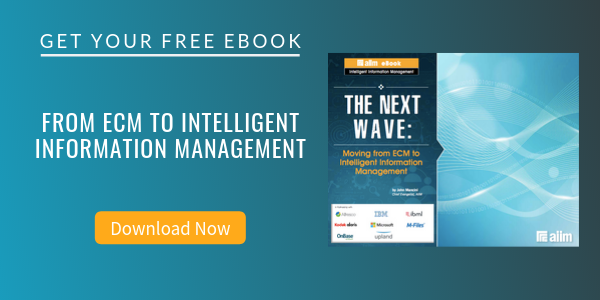
By: Wouter Koelewijn on October 30th, 2017
How Important Is Digital Document Consistency?
Enterprise Content Management (ECM)
A repository containing documents that were digitized inconsistently or inaccurately presents a new set of problems for an organization, problems that can hinder the productivity gains they had hoped to achieve.
Obviously, digital document accuracy is particularly important for the government and regulated industries. But any organization can benefit from a consistent and accurate document repository; it saves time and frustration for users when searching or retrieving documents. However, human error puts both consistency and accuracy at risk. Automated scan workflows are essential in resolving the perils of human error that result in inconsistent or inaccurate digital content.
What are Automated Scan Workflows?
In a nutshell, automated scan workflows are tailored and presented to the user on the scanning device (usually a multifunction printer) for the specific scanning task such as scanning invoices. Workflows take much of the decision making a process out of the hands of the user through predefined templates that preselect scan parameters. This provides organizations the assurance that documents are legible and exported in the correct, desired format e.g., jpg, searchable PDF. Finally, automated scan workflows can define the document destination, for example, a third-party repository, an on-premise shared folder, or line of business application.
Consistent document capture and file naming
Because automated scan workflows are predefined, capture parameters including output quality and output file formats can be consistent for a particular process; for example, scanned invoices may be in jpg, whereas legal documents are PDFs. Because multifunction printers offer so many menu choices, one user may make one set of choices resulting in a low quality, color jpg scan and another may choose a high quality, grayscale PDF. The result is a mixed bag of digital documents in your repository.
Another area that lends itself to mixed results is in the file naming structure. Left to decide, users can create a variety of document naming formats that only make sense to them. With automated scan workflows, even the filename can be predetermined. For example, the workflow may prompt the user to select from a menu the type of document which becomes part of the filename along with the date the scan is made.
Additionally, if barcodes exist on a document, the workflow can use the information contained in the barcode as part of a file naming structure. A client number or name can be taken from the barcode and appended to the filename. A healthcare provider may use barcodes to identify individual patients, particular medical tests, and documents relating to a specific patient. When the test results are scanned, the automated workflow uses the information within the barcode to name the file, append the test date, and save the results to the patient’s record folder.
This kind of consistent filename structure makes search and retrieval of digital documents faster and, for the records manager, it makes the job of managing the repository much easier. In industries where compliance is a concern, the organization can create workflows that comply with regulations and are assured that compliance consistency is applied.
Consistent document delivery
Scan workflows that automatically sends the digital document to a pre-defined, authorized destination, remove the risk of the document getting lost or getting into the wrong hands. For regulated industries, consistent delivery of sensitive information reduces the risk of breaching compliance regulations and gives the organization a tracking mechanism for auditing compliance adherence, a somewhat burdensome task.
Consistent document delivery can be flexible, depending on the digital task. Workflows can be set up for delivery to a cloud-based repository (such as DropBox for Business), an on-premise electronic content management (ECM), or a line of business application. Regardless of the destination, the important factor is that the organization is in control of where scan documents are delivered. Even in offices not mandated by compliance, maintaining control over documents that contain proprietary information can mean the difference between winning a lawsuit and not being able to prove a former employee ‘stole’ company data.
One more thing
We live in a dynamic world where processes and compliance regulations can often change. Should any element of the digital process change, making changes to the workflow can be done easily. By adjusting the capture, processing, and delivery parameters in the workflow, the changes are automatically propagated to all the multifunction devices. Those who are authorized to use the workflow do not even know a change occurred. They just choose the workflow, place the documents in the feeder, and behind the scenes, the workflow does its job, capturing, processing, and delivering as instructed.
About Wouter Koelewijn
Wouter Koelewijn is Senior Vice President, Managing Director, Y Soft Scanning Division and an outspoken advocate for simplifying scanning on MFD's (Multifunction Devices). Prior to working with Y Soft, Mr. Koelewijn founded X-Solutions in late 2002 which was later acquired by Nuance in 2009. Prior to X-Solutions, Wouter was the CTO and co-founder of a Xerox concessionaire in the Netherlands from 1994-2002. Mr. Koelewijn is married and has two children. He enjoys skiing, swimming and sailing.


